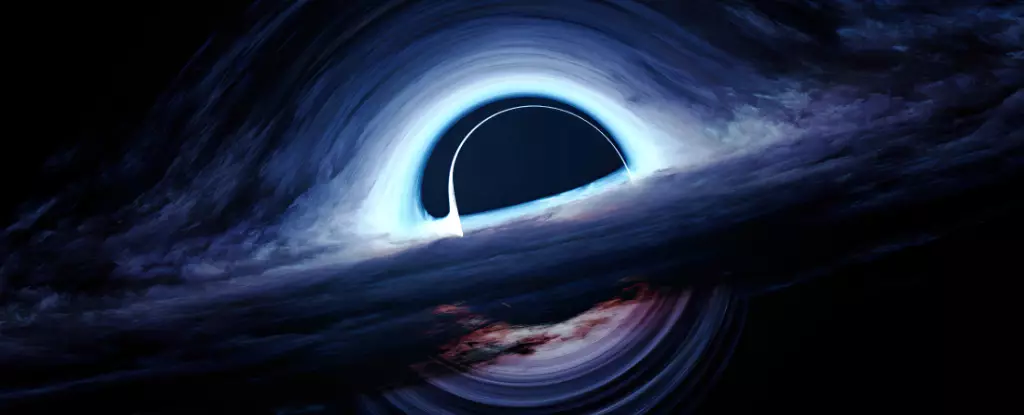Supermassive black holes (SMBHs) are among the most enigmatic phenomena in astrophysics, with their masses often exceeding that of our Sun by a billion-fold. These cosmic leviathans lie in the centers of galaxies, and their profound influence on galactic dynamics is compounded by their elusive nature. Their presence has been confirmed through various methods, notably via the detection of quasars — extremely luminous sources emanating from matter accelerated and heated as it spirals into the black hole. The discovery of quasars dating back to the universe’s infancy, when it was less than one billion years old, has posed substantial questions regarding their formation and evolution.
The Accretion Process and Its Limitations
The growing process of supermassive black holes primarily occurs through accretion, wherein they envelop surrounding material. This phenomenon generates immense radiation, creating a paradox: the light and energy emitted can place constraints on the rapidity with which black holes can grow. This dynamic challenges the understanding of early quasars’ existence, which thrived during a relatively short cosmic period. To reconcile the early emergence of these massive objects, astronomers must consider two pivotal scenarios: either these black holes formed under atypical conditions or they began their lives with unusually dense mass.
The origins of black holes are still debated among scientists, with several potential mechanisms suggested. One theory posits the existence of primordial black holes created shortly after the Big Bang. However, current cosmological models do not support significant populations of massive black holes forming through this method. Alternatively, stellar black holes arise from the remnants of massive stars that culminate their life cycles in supernovae. For SMBHs to exist in early cosmic epochs, though, these stellar seeds must coalesce and amalgamate in high-density star clusters, facilitating swift growth.
Yet another theory posits the existence of “heavy seeds,” black holes possibly arising from a process known as direct collapse. This mechanism, reliant on the behavior of dark matter, suggests that dense gas clouds could have succumbed to gravity under confinement by dark matter without forming stars. While compelling, this theory encounters challenges, as only select dark matter halos possess the requisite conditions for such massive collapses.
Over the last decade, significant strides have been made in understanding black holes, particularly regarding their quantity and mass distribution. Historically, estimating the number of black holes in early galaxies required identifying luminous quasars, which only constitute a fraction of existing SMBHs. Through systematic monitoring of brightness changes in various galaxies over 15 years, recent studies have revealed a surprising conclusion: the quantity of black holes residing in early galactic environments is significantly greater than previously estimated. Furthermore, advancements made by the James Webb Space Telescope (JWST) are validating these findings, suggesting that prior models may underestimate the early formation of black holes.
Beyond the standard black hole formation theories, researchers have proposed more exotic possibilities that could explain the prevalence of massive black holes in the early universe. One such idea involves the possibility of stars forming from gas clouds heavily interwoven with dark matter particles, thus disrupting the conventional stellar lifecycle. This interruption could lead to prolonged growth periods for these stars, which would eventually succumb to gravitational collapse, resulting in the formation of significant black hole populations.
The journey through black hole research is still in its early chapters. With a myriad of upcoming observational campaigns, such as the Euclid mission and the Nancy Grace Roman Space Telescope, the astronomical community is poised to shed light on the enigmatic life cycles of supermassive black holes. In the immediate future, the JWST’s unparalleled capabilities will likely allow researchers to monitor primordial star formations and perhaps even witness the moment of supermassive black hole formation in vivid detail.
As the field of astrophysics continues to evolve, researchers are increasingly optimistic about unveiling the mysteries surrounding supermassive black holes. The next few years represent an unparalleled opportunity to grasp the dynamics of cosmic giants. Collaborative and coordinated efforts among astronomers will not only result in a more precise understanding of black hole numbers but may also lead to the revelation of the very processes that shaped the early universe. This relentless pursuit of knowledge opens new avenues for understanding our cosmos, potentially transforming our grasp of black holes from mere shadows of theory into vivid reality.

